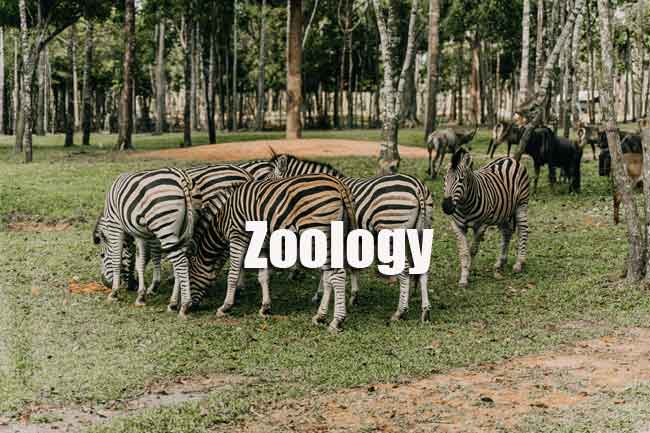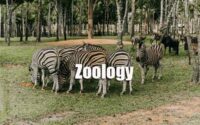Zoology Important Question
In this Article, we have provided the Zoology Important Question Papers along with Solutions. So, the interested candidates who applied for jobs in Zoology can download Zoology Important Question Papers for free of cost. Get all the Zoology Important Question Papers with just one click. Click on the enclosed links below to download the Zoology Important Question Papers.

Check the Last five years Zoology Important Question Papers to get a clear idea of the exam pattern. Along with Zoology Important Question Papers, it’s better to refer Zoology Syllabus & Exam Pattern before starting preparation. So, click on link to check and download Zoology Important Question Papers PDF.
Important Question Papers of Zoology
1. The ornithine cycle was discovered by
(1) T. Ornithine
(2) Krebs and Hensleit
(3) T. Ornithine and Brooker
(4) Prosser and J. Nireberg
2. Which one of them is not a peptide nature neurotransmitter ?
(1) Serotonin
(2) B-endorphin
(3) Dynorphin
(4) Somatostatin
3. The propagation rate of action potential of nerve depends on
(1) Myelinated axon
(2) Axon diameter
(3) Insulation by glial cells
(4) All of these
4. Which kind of cells occurs in abundance in nervous system ?
(1) Interneuron cells
(2) Motor neuron cells
(3) Sensory neuron cells
(4) Glial cells
5. Menstrual fluid is non-clotting due to the presence of
(1) Heparin
(2) Hirudin
(3) Fibrinolysin
(4) Thrombinostabilizin
6. Which one of them is antagonist of progesterone using as abortive agent ?
(1) Nor-ethindrone
(2) Nor-ethyriodrel
(3) Ethinyl estradial
(4) Mifepristone
7. Which one of them hormone secrets by renal tissues ?
(1) Renal zymogen
(2) Prorenin
(3) Somatostatin
(4) Erythropoietin
8. Oxygen saturation of venous blood is
(1) 25%
(2) 50%
(3) 100%
(4) 75%
9. Which one of them is affecting the urine output ? –
(1) Vasopressin hormone
(2) Gonadotropic hormone
(3) Water intake
(4) Osmotic state of the blood
10. Which one of them nutrient supplement given to the pregnant women for curing the anaemia ?
(1) Vitamin C
(2) Vitamin D
(3) Folic acid
(4) Cyanocobalamin
11. pH of lysosome interior is
(1) 10-12
(2) 8-10
(3) 5-7
(4) 4-5
12. Which is more abundant in R.E.R. (Rough Endoplasmic Reticulum) ?
(1) Cisternae
(2) Vessicle
(3) Annulate E.R.
(4) Both (1) & (2)
13. A glycoprotein within a plasma’ membrane has which of the following characteristics ?
(1) Attaches to cytoskeleton proteins.
(2) Oriented towards the environment.
(3) Peripherally attached to the membrane.
(4) Found both the membrane leaflets.
14. Which one of them is not a cell adhesion molecule ?
(1) Selectin
(2) Laminin
(3) Cadherein
(4) Immunoglobin subfamily
15. The genes family of umu C, umu D and Rec A are involving in the following process :
(1) SOS DNA repair
(2) Recombinational repair
(3) Reverse transcription
(4) Transcription
16. The properties of selectins adhesion molecules is
(1) Selectins on one cell interacts with a carbohydrate containing ligand on another cell.
(2) Selectins mediate cell to matrix adhesion.
(3) Selectins have homophilic binding.
(4) Selectins are transmembrane proteins; other adhesion molecule as intracellular.
17. The plasma membrane is detected to have caveolae. These structures are
(1) Cholesterol-enriched membrane invaginations.
(2) Components of phospholipids.
(3) Regions with high carbohydrate content.
(4) Regions of protein dominating content.
18. A microtubule is observed quickly after a period of rapid growth. Which of the following most likely occupied to this microtubule to stimulate its break down ?
(1) Loss of its GTP
(2) Loss of ATP
(3) Severing by gelsolin
(4) Twisting of cofilin
19. Mitochondrial matrix contains
(1) Enzymes
(2) DNA & RNA
(3) Ribozyme
(4) All of these
20. Cell organelles have content of DNA is/are
(1) Nucleolus
(2) Plastid
(3) Mitochondria
(4) All of these
| Hard Questions | GK |
| Easy Questions | Quiz |
| Important Questions | Viva |
| TRB | MCQs |
| GATE | Sample Papers |
| JRF | Model Questions |
| NEET | Previous Papers |
| Objective |
21. Ki67 is molecular diagnostic target for
(1) Hyperthyroidism
(2) Cancer
(3) Gastrointestinal problem
(4) Headache and nausea
22. Which one of them rule explained that geographical races of species inhabiting cold areas are much larger as compared to their warmer counterparts ?
(1) Gloger’s rule
(2) Allen’s rule
(3) Bergman’s rule
(4) Jordan’s rule
23. Source of Phosphorus in aquatic system is
(1) Urban drainage
(2) Fertilizers
(3) Weathering of phosphorus containing rocks
(4) All of these
24. The Allen rule is explaining that
(1) The extremities such as the tail, ears and legs of mammals are shorter in colder climates
(2) The weight and height are heavy and longer of mammals in warmer climates.
(3) The colouration of rabbits is darker in colder climates with comparison to warm climates.
(4) The food content is more consumed by warmer climates mammals in comparison to colder climates.
25. Transformation of nitrite’ to nitrate is governed by
(1) Nuitrobacter sp.
(2) Nitrosomonas
(3) Nitrococcus
(4) None of these
26. The many animals including insects, birds and mammals bear darker pigmentation in warm humid climates that explained by
(1) Gloger’s rule
(2) Allen rule
(3) Jordan’s rule
(4) Rensch’s rule
27. The race of birds inhabiting colder region develop relatively narrower and more accumulate wings than those in warmer climate is explained.
(1) Allen’s rule
(2) Gloger’s rule
(3) Bergmann’s rule
(4) Jordan’s rule
28. Which of the following is the best indicator of SO2 pollution ?
(1) Pinus
(2) Ferns
(3) Lichen
(4) Algae
29. Both undercrowding (low density) and overcrowding (high density) are deleterious and limiting to growth rate of the population is explained by
(1) Allee’s principle
(2) Homberg’s principle
(3) Shelford’s principle
(4) Liebling’s principle
30. Ecological pyramids were first time explained by
(1) Charles Elton
(2) Charles Ervin
(3) Charles Edison
(4) Charles Emersion
31. The smallest size of a cell which can be seen with unaided eye is
(1) 1 micron
(2) 10 microns
(3) 100 microns
(4) 1000 microns
32. Which stain is used for electron microscopy ?
(1) PAS
(2) Para Rosailin
(3) Osmium tetra oxide
(4) Hematoxylin
33. Which is a pre-requisite for electron microscope ?
(1) Vacuum
(2) Living material
(3) Source of light
(4) Reflector
34. Scanning electron microscope is used for
(1) Topography of cell/tissue
(2) System analysis
(3) Fluorescent
(4) Organ system
35. Chromatography is based on the principle of
(1) Passage at different rates
(2) Adsorption at different rates
(3) Reactivity of biochemicals
(4) Both (1) and (2)
36. Polymerase Chain’ Reaction (PCR) required
(1) Nucleotides
(2) Magnesium chloride
(3) Buffer
(4) All of these
37. In PCR DNA amplification process buffer pH required
(1) 8.3-8.8
(2) 6.00
(3) 7.4
(4) 6.9 — 7.2
38. Primer annealing required temperature is
(1) 15° —35°C
(2) 45° — 75 °C
(3) 55° — 65 °C
(4) 25°- 35°C
39. DNA polymerase quantity required in PCR is
(1) 1 —2.5 units
(2) 5 —6.00 units
(3) 3.4 —5.4 units
(4) None of these
40. Primers quantity required in PCR is
(1) 0.56-1.0 µM
(2) 2.5—3.0 µM
(3) 1—1.5 µM
(4) 2.1-—2.5 µM
41. Restriction enzymes are synthesized by
(1) Bacteria only
(2) Yeast and Bacteria
(3) Eukaryotic cells
(4) All kinds of cells
42. In PCR DNA denaturation temperature is at
(1) 95 °C for 1 min
(2) 50°C for 2 min
(3) 63 °C for 3 min
(4) 45 °C for 10 min
43. PubMed is
(1) Literature citation database
(2) Medcow neuro-disorder disease
(3) Hogness box with specific sequence
(4) Terminator sequence of downstream site
44. What is ORFs (Open Reading Frame) ?
(1) Continuous groups of adjacent codons that starting with ATG and ending with TGA, TAA or TAG.
(2) The sequence of non-specified DNA which cannot replicate as well as conserve itself from surrounding degrading agents.
(3) The smallest unit of DNA sequence that represent fundaments.
(4) Longest sequence.
45. Ribozyme is –
(1) Ribosome and protein
(2) Protein which Consisting with ribosome
(3) DNA
(4) RNA molecule.
46. Centimorgan is
(1) Part of drosophila’ eye marked pigment.
(2) One percent recombination between two genes.
(3) The material of which chromosomes are composed.
(4) A unit of DNA cloning.
47. Resolving powers of eye, compound microscope and electron microscope are respectively
(1) 100 pm, 0.25 pm and 10A
(2) 100 pm, 100 nm and 100A
(3) 1mm, 10 pm and 100 nm
(4) 1mm, 0.5pmand1A
48. Main source/s of nitrogen content in lake is/are
(1) Rocks
(2) Atmosphere
(3) Photosynthesis
(4) All of these
49. Which one of the not involving in extracellular signalling ?
(1) Cyclic AMP
(2) Autocrine
(3) Paracrine
(4) Endocrine
50. Cell signalling pathway following by T-lymphocyte in response to antigenic stimulation ?
(1) Endocrine signalling
(2) Juxtacrine signalling
(3) Paracrine signalling
(4) Autocrine signalling

